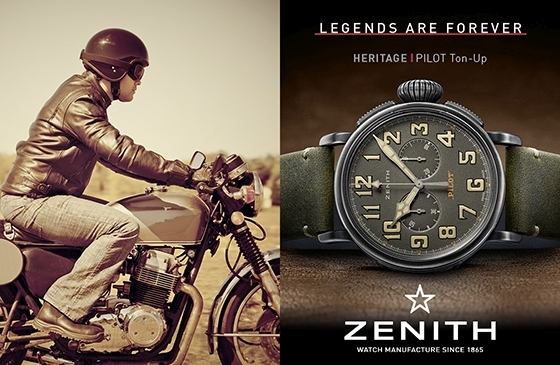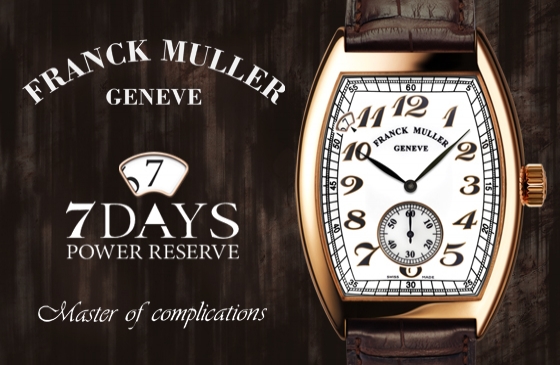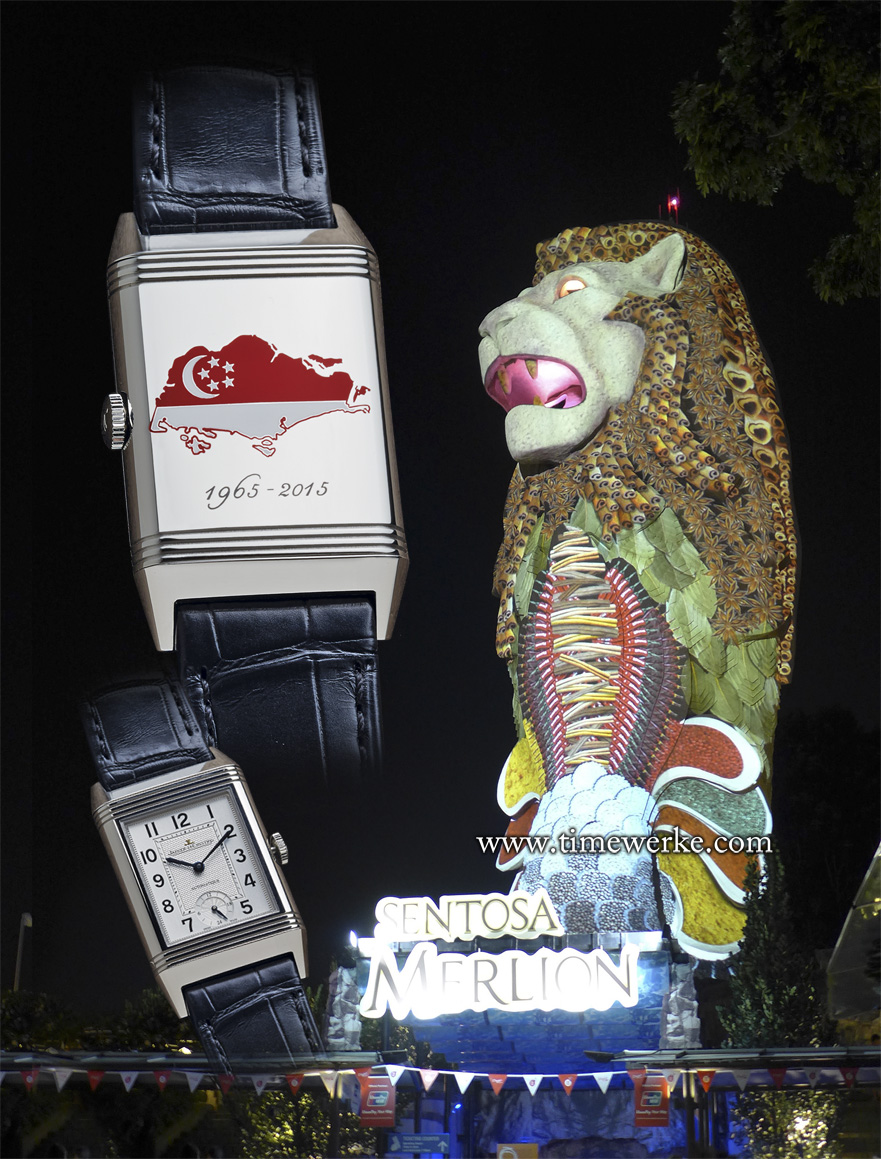
Jaeger LeCoultre’s Grande Reverso Night & Day Singapore Special Edition is a piece that was specially made to commemorate the 50th anniversary of Singapore’s independence. What is special about this Jaeger-LeCoultre Singapore Special Edition in stainless steel is the lacquered map of Singapore on the back of its reversible case. Limited to 50 pieces and priced at SGD13,900 and available only at Jaeger-LeCoultre’s two boutiques in Singapore: at ION Orchard and at Marina Bay Sands The Shoppes. On the right is the Sentosa Merlion. Photo of Sentosa Merlion: © TANG Portfolio. Elfa / Timmy. The colourful Sentosa Merlion was possible thanks to projection mapping and was taken on 8 August 2015 at 9pm. Photos of the Jaeger-LeCoultre Singapore Special Edition watches: © Jaeger-LeCoultre
Made specially to commemorate the 50th anniversary of Singapore’s independence (1965 to 2015), the most prominent feature on Jaeger LeCoultre’s Grande Reverso Night & Day Singapore Special Edition is the lacquered map of Singapore at the rear of its reversible case.
The Singapore map bears the country’s red and white colours including the flag symbols comprising the white crescent moon with five white stars. Below the map, the years “1965 – 2015” is inscribed marking the fifty years of nationhood.
Interestingly, Singapore’s map would have changed quite a fair bit as well over this period. According to The Straits Times in an article, Nurturing a Love for Nature which was published in August 2015, the interview with retired associate professor of geography from the National University of Singapore, Dr Wong Poh Poh, mentions that Singapore’s land area has expanded by around 25% from 1965 till today, from 580 square km to 720 square km due to land reclamation.
Singapore is also known as the “Lion City” because of an ancient legend whereby the first king of the island, Sang Nila Utama, possibly mistook the sighting of another animal for a lion while hunting. It was Sang Nila Utama who then named the island “Singapura”, the Sanskrit word for “lion city” when translated to English.
Somehow, we get the sense that perhaps not many (Singaporeans included) know of the Merlion’s historical background, a symbol that is synonymous with Singapore.
While the origin of how Singapore became known as the Lion City is rather well-known, what about that of the Merlion? The Merlion that has a lion head and the body of a fish (sorry guys, it is not that of a mermaid).
The Merlion is said to be the guardian of prosperity where the lion head is symbolic of Sang Nila Utama’s lion sighting and the fish tail is representative of the fishing village known as “Temasek”, a Javanese word that means “sea town” when translated to English.
The emblem of the Merlion was first designed by Fraser Brunner in 1964, the then curator of the Van Kleef Aquarium (opened in 1955 but ceased operations in 1991), for the Singapore Tourist Promotion Board (which has since been renamed Singapore Tourism Board).
The emblem was only later named the Merlion and it became an officially registered trademark of the Singapore Tourist Promotion Board on 20 July 1966. It then became the corporate logo of the Singapore Tourist Promotion Board from 1966 to 1997.
A new corporate logo was designed for the Singapore Tourism Board in 1997 and the Merlion continues to be a protected symbol.
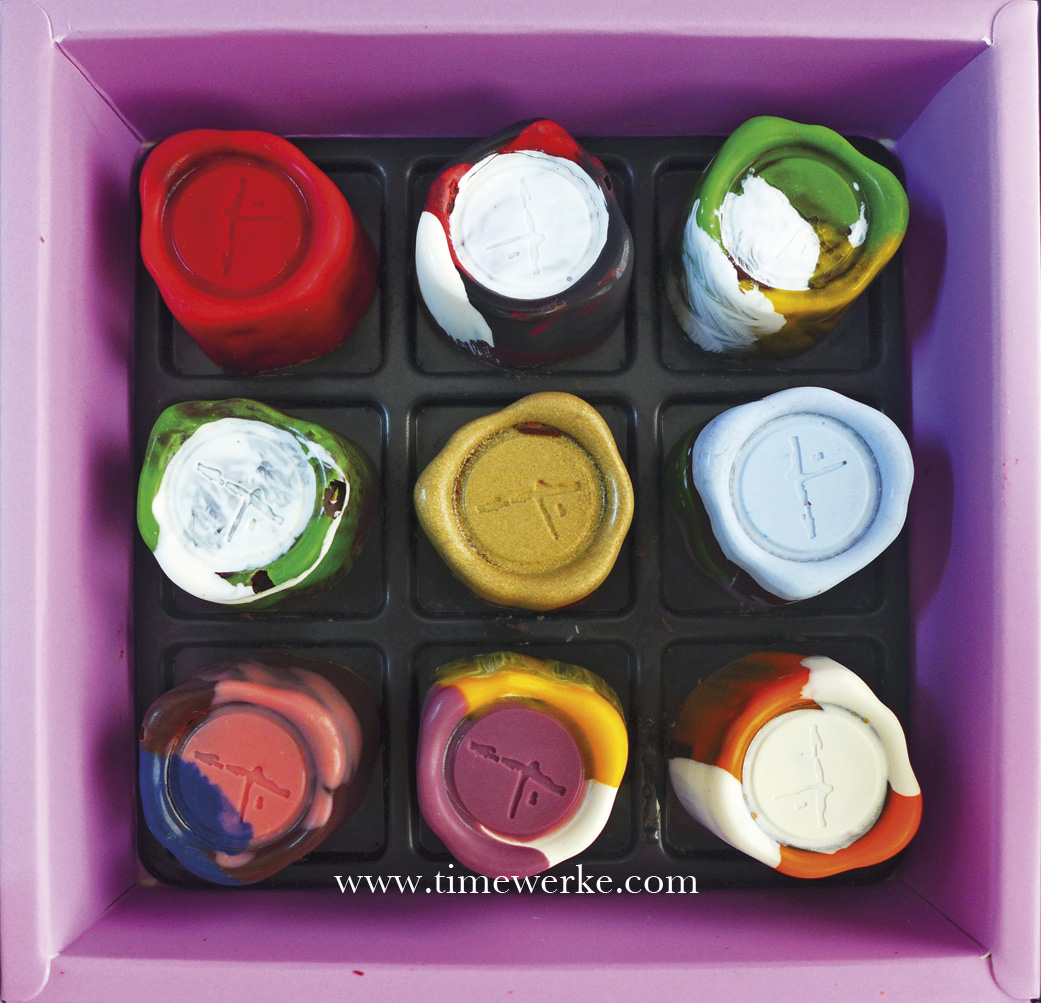
Jaeger-LeCoultre Singapore also celebrated Singapore’s 50th anniversary of its independence (1965 to 2015) with clients by offering Singapore edition chocolates created by 2am: dessertbar chef Janice Wong that had local flavours. Photo: © TANG Portfolio. Elfa / Timmy. 2015
The first statue of the Merlion is located at the Merlion Park, facing east, a direction for prosperity in accordance with feng shui guidelines (Chinese geomancy), at the mouth of the Singapore River which is near One Fullerton.
This eight-metre tall Merlion statue and a smaller two-metre one, also found at the park, were officially unveiled by former Singapore Prime Minister Lee Kuan Yew (1923 to 2015) on 15 September 1972.
Over at Sentosa is the Sentosa Merlion which was designed and sculpted by James Martin, an Australian artist. The Sentosa Merlion was completed in 1995 and built at the cost of SGD13 million.
The Sentosa Merlion rests on a base that resembles the bagua, an auspicious feng shui tool “used to direct energy towards prosperity”. In addition, each of its 320 scales is shaped like the bagua.
According to the good folks running Sentosa Island, the Merlion protects Singapore. They say the Merlion visits the island every year and cite a legend of how the Merlion once protected Singapore from a violent storm.
In fact, the first Merlion statue at the Merlion Park took a hit (for Singapore) as it was struck by lightning on 28 February 2009 during a thunderstorm, cracking the lion’s mane and with falling debris creating a hole at its base. The Merlion was duly repaired.
Moreover, the Sentosa Merlion is built on a hill 23 metres above sea level and is 37 metres tall, comparable to a 11-storey building. This means that if one is on the Sentosa Merlion’s head, he or she will be 60 metres above sea level.
Visitors can make an ascent up the Sentosa Merlion (though not as high as 60 metres above sea level) as there is an observation deck in its mouth to catch a view of Singapore and the Central Business District. This is the largest and tallest Merlion statue in Singapore that watches over the island day and night.
Speaking of day and night, it is well worth highlighting the sub-dial at the six o’clock position on Jaeger-LeCoultre’s Grande Reverso Night & Day Singapore Special Edition.
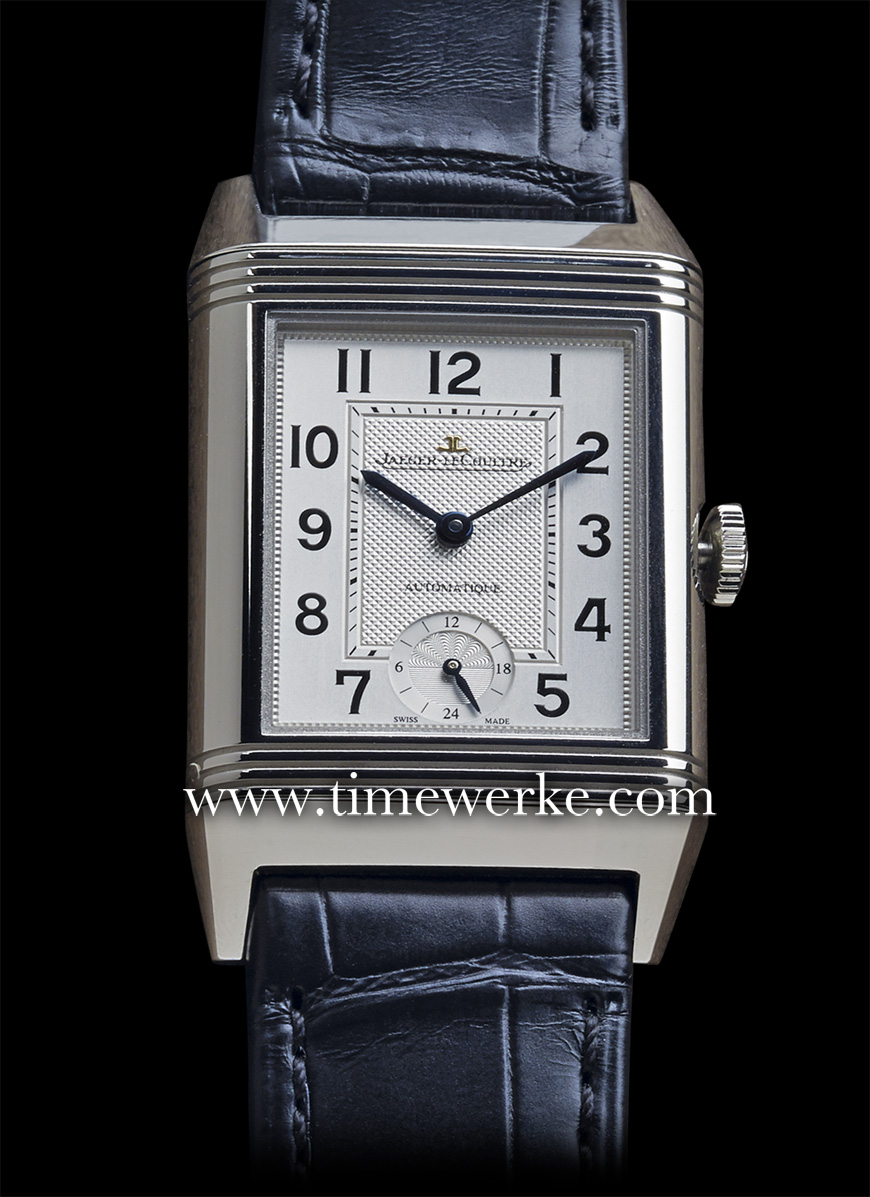
On the day and night indicator at the six o’clock position of Jaeger-LeCoultre’s Grande Reverso Night & Day Singapore Special Edition, there are two different guilloché patterns: the top half decoration represents the day (6am to 6pm) and the lower half for the night (6pm to 6am). Photo: © Jaeger-LeCoultre
A casual glance might lead one to believe that this is for the continuous sweep seconds hand but it is not. This is the night and day indicator, going by the Arabic numerals.
The upper half of the sub-dial is for the night as it indicates the hours from 6 am to 6pm (Arabic numeral 18) while the lower half is for the hours in the night (6pm to 6am).
What is also interesting is the decoration on this day and night sub-dial. There are two different guilloché patterns, the top half decoration representing the day and the lower half is for the night.
Other related articles that may be of interest on timewerke.com are:
i. Audemars Piguet Floral Clock: AP Royal Oak with granite bezel?
ii. Montblanc Star Classique Singapore Special Edition: Lion City
iii. Swatch SG50 watches: Wrist-flagged
iv. Longines Master GMT Singapore: Independence Day

